





Unless you have been living under a rock, you are probably aware of the disappearance of honeybees, due in large part to ?Colony Collapse Disorder?. Scientists worldwide are working to pinpoint the cause, and find a cure. Now, an associate professor of biology at San Francisco State University is enlisting ?citizen scientists? in a coast-to-coast study on the health of pollinating bees. You and your children can join in, make a real contribution, and have fun at the same time.
The idea is very simple. Find out where the bees are, and where they are not. To do this requires people. A lot of people. People who care about their gardens. People who care about insuring their food supply. (Bees: Responsible for Every Third Bite of Food)[1] Whether your garden grows flowers, herbs, fruit or vegetables, many plants need pollinating before forming 'fruit'. Bees are a major pollinator, so the idea is to count the bees. Not to count every bee in existence of course, just how many bees land on a specific variety of sunflower in 30 minutes.
The study is Dr. Gretchen LeBuhn’s, The Great Sunflower Project. She says, “We know very little about bee activity in home and community gardens and their surrounding environments, but we are certain that they are a crucial link in the survival of native habitats and local produce, not to mention our beautiful urban gardens. Our local pollinator populations require our understanding & protection, and to answer that call we need to determine where and when they are at work.
With enough citizen scientists collecting data, we can learn much more, much faster, about the current state of bee activity. We would love to have you join us; let’s learn about pollinators together!”[2]
The requirements are easy: plant the sunflower, then twice a month while it flowers, time how long it takes for 5 bees to pollinate it, or 30 minutes, whichever comes first. Report the count on the standardized data sheets they supply. To make sure the study is always comparing apples to apples, LeBuhn asks people who participate to all plant the same variety, the annual sunflower Helianthus annuus ‘Lemon Queen’. Seeds were available free from the project until May 10 (shipping ended May 15), or you can order them online and save the project a little money and postage. See the supplier list below.
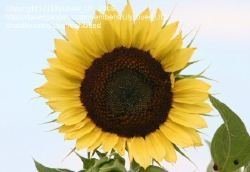
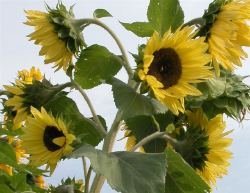
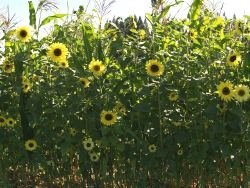
Why sunflowers?
They are very easy to grow (they sure do sprout up around my bird feeders!), and birds and bees love them. Sunflowers have both nectar to feed the bees, and pollen for the bees to take back to the nest. (The bee larvae feed on the pollen.) I asked LeBuhn why this particular sunflower? She told me, “Lemon Queen has pollen, multiple flowers (it will bloom for longer), is not too large (grows in a pot) and is fairly inexpensive. It also is available in organic seed for those people who want to participate and are organic farmers.” (Please note: there is a perennial sunflower, Helianthus 'Lemon Queen' that is on the market. It does not come true from seed, and it is not the same as this annual sunflower, and should not be used for this study.)
One very important thing DeBuhl stresses is counting and reporting where the bees are NOT. She feels those are the places that bees might need help, and one of the main goals is to know where the bee count is low or non-existent. So if you see fewer than 5 bees (or see none at all) in the 30 minutes, it is most important to report it.
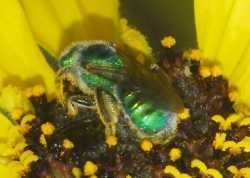
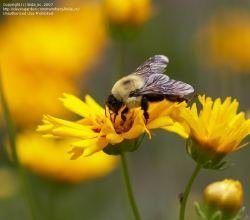
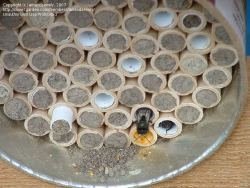 Green metallic bee
Green metallic bee
bumblebee
Orchard mason bee
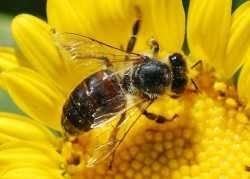
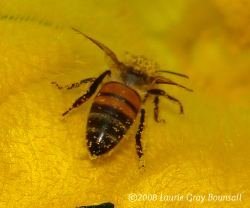
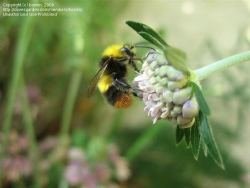 Dark Honeybee
Dark Honeybee
Honeybee covered in pollen
Bumblebee
The bees above are pollinators; count them!
What kind of bees?
They are looking for pollinating bees and you don’t have to be able to identify which ones you see. However, you should be able to tell the difference between a wasp and a bee; their website has a bee guide on how to tell the difference. A yellow jacket (Paravespula vulgaris) is a wasp and they don’t want to count those. The main groups of bees to be counted are honeybees (Apis mellifera), bumblebees (Bombus), metallic green bees (Agapostemon cockerelli), carpenter bees (Xylocopa), and solitary bees such as mason bees (Osmia) as a group. All you really have to know is if it's a bee. However, if you can identify which bee, that's extra information they'd love to have. Beekeepers are particularly encouraged to participate.
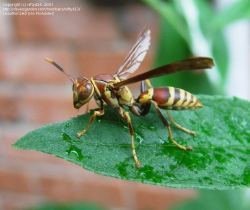
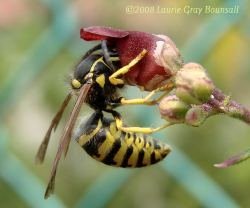
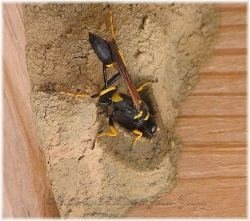 Paper wasp Yellow jacket
Paper wasp Yellow jacketThe photos above are wasps. Do not count them!
Being a 'citizen scientist' for this study presents a great educational opportunity for children. Not only can they learn about bees and pollination, the younger children can learn how to grow a sunflower from seed, how to tell if the flower has nectar or pollen (touch it!), how to time 30 minutes on an analog clock, reading (see website for suggested books) and more. The website also has resources for teachers, with ideas for math, social studies, writing, health, etc. See link below.
So far, the project has registered more than 40,000 American and Canadian ‘citizen scientists’ ranging from pre-schoolers to master gardeners in rural, suburban and metropolitan neighborhoods since it began in the spring of 2008. Your help is needed. (I have already ordered my seeds.) Please become a volunteer ’citizen scientist’, grow a sunflower and help count the bees!
Volunteering to be a citizen scientist, and the 4 easy steps to participate:
http://www.greatsunflower.org/en/four-easy-steps-participate
Resources for teachers:
http://www.greatsunflower.org/en/resources-teachers
Additional Resources for teachers (Classroom Projects):
http://www.kidsgardening.com/growingideas/projects/jan03/pg2.html
Educational Forum
http://www.greatsunflower.org/en/forums/education-forum-0
Just a few of the many companies who sell the annual sunflower ‘Lemon Queen’ seeds:
Renee’s Garden (contributes 10% of the proceeds from this seed purchased to the project)
Gurney’s
Thompson & Morgan
Sustainable Seed Company (Heirloom, Untreated, Open Pollinated seed)
Organic Seed:
Peaceful Valley Farm
Seed Empire
ESP Seeds
West Coast Seeds
Live Plants:
Plant Delights Nursery
End Notes:
[1], [2] http://www.greatsunflower.org
Photo credits:Copyright © www.100flowers.win Botanic Garden All Rights Reserved